Annotations for Supplementary Materials
Vonnegut, Kurt. "Harrison Bergeron". Welcome to the Monkey House. 1968. <www.tnellen.com/westside/harrison.pdf>. 8 December 2010.
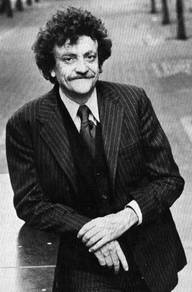
"Harrison Bergeron" is a short story written by Kurt Vonnegut that depicts a world where all people are made to be "equal". This equality is achieved through the placements of handicaps on those who are above-average in any way. For example, people who are very strong are made to carry heavy weights around their necks, in order to offset their larger amounts of strength. Especially smart people are made to experience a very loud, annoying noise in their ear every few minutes, so that they cannot think too seriously about a subject for an extended period of time.
As this story looks at the issues of utopia/dystopia, we will use it in this unit to help students examine the reasoning behind the Cambodian Genocide, why the Khmer Rouge looked to implement the society found in First They Killed My Father.
-Adam Blazek
As this story looks at the issues of utopia/dystopia, we will use it in this unit to help students examine the reasoning behind the Cambodian Genocide, why the Khmer Rouge looked to implement the society found in First They Killed My Father.
-Adam Blazek
Chopin, Kate. "A Pair of Silk Stockings". The Complete Works of Kate Chopin. 1969. <www.pbs.org/katechopin/library/silkstockings.html>. 9 December 2010.
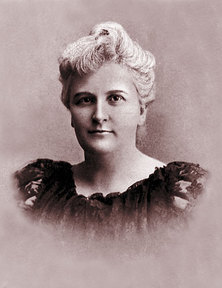
The protagonist in Kate Chopin's short story, "A Pair of Silk Stockings", finds herself in possession of 15 dollars, and proceeds to experience an eye-opening day of spending her money on her greatest desires. Shopping at stores where her easy demeanor baffles the clerks, eating at a restaurant she could have never afforded before, and taking in a movie that moves her to laughter and tears, Miss Sommers becomes awakened to an entirely new world by the end of her day.
This short story, as well as the other Kate Chopin story below, will be used in this unit as a means to examine the notion of female awakening. This is an important theme in Ragtime, and the lesson using both of these stories is meant to frontload students, so that they can recognize similar aspects in the novel as they discover in these stories.
-Adam Blazek
This short story, as well as the other Kate Chopin story below, will be used in this unit as a means to examine the notion of female awakening. This is an important theme in Ragtime, and the lesson using both of these stories is meant to frontload students, so that they can recognize similar aspects in the novel as they discover in these stories.
-Adam Blazek
Chopin, Kate. "The Storm". The Complete Works of Kate Chopin. 1969. <www.faulkner.edu/admin/websites/cwarmack/The%20Storm%20Chopin%2Epdf>. 9 December 2010
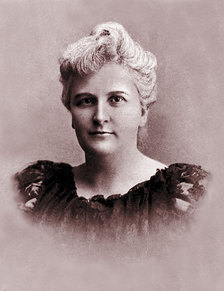
"The Storm" contains the theme of female awakening in a much more overtly-sexual way than "A Pair of Silk Stockings". During a long and violent storm near Calixta's house, she finds herself in the company of former lover, Alcee. Each has since gotten married, but old flames of passion continue to linger beneath the surface. At first looking to deny temptation, they ultimately find themselves lovers once more, freed from the doldrums of society for a few short hours.
The pair of Chopin's short stories included on this page will be used in this unit to describe aspects of the theme of female awakening. This theme is important to some of the characters of Ragtime, and drives some major parts of the plot. By reading this Chopin stories, students will be better-prepared to understand the importance of female awakening as they make their way through one of the unit's main novels.
-Adam Blazek
The pair of Chopin's short stories included on this page will be used in this unit to describe aspects of the theme of female awakening. This theme is important to some of the characters of Ragtime, and drives some major parts of the plot. By reading this Chopin stories, students will be better-prepared to understand the importance of female awakening as they make their way through one of the unit's main novels.
-Adam Blazek
Angelou, Maya. "Still I Rise". <www.poemhunter.com/poem/still-i-rise> 9 December 2010
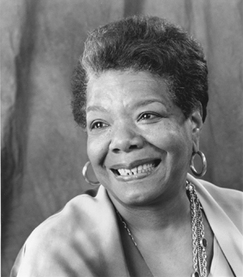
Maya Angelou's "Still I Rise" is one of three poems used to portray different aspects of writing in favor of women's rights. Angelou goes through her poem listing ways in which people may try to hold her down, because they do not like parts of her personality, parts of her feminine nature, or just because she is a woman. But through all of the actions and troubles that face her, she maintains a strong will by sticking to her mantra, "Still I Rise". No matter what in the world comes down upon her, she will always persevere.
We chose to include Maya Angelou to show students how women's rights is still an issue today, because contemporary poets are still writing about it. She also combines unique perspectives as a woman and an African-American, allowing students to understand the roles of these unique identities in fighting for rights.
-Adam Blazek
We chose to include Maya Angelou to show students how women's rights is still an issue today, because contemporary poets are still writing about it. She also combines unique perspectives as a woman and an African-American, allowing students to understand the roles of these unique identities in fighting for rights.
-Adam Blazek
Gilman, Charlotte Perkins. "The Yellow Wallpaper". 1899. Retrieved online from <www.library.csi.cuny.edu/dept/history/lavender/wallpaper.html>. 9 December 2010
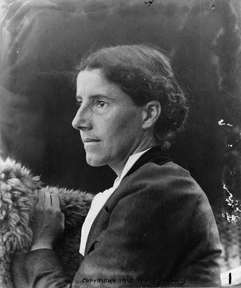
"The Yellow Wallpaper" is a well-known example of women's rights literature. Sequestered in her home by her husband, also acting as her doctor, the short story's protagonist finds herself increasingly captivated by the room's yellow wallpaper. A distinct smell, an aura that radiates from its patterns that cannot be understood and constantly change, and eventually a woman trapped within its clutches, are what the narrator comes to see in it. She becomes obsessed with freeing this woman from the wallpaper, careful not to let her husband see her doing it, for he could re-diagnose her.
Many different interpretations can be made from Gilman's short story with regards to women's rights, from the paternal dominance of the woman's marriage, to the "rest-cure" she is made to endure, and so on. Students reading this story will be able to uncover these unique features in Gilman's writing, and better understand aspects of women's rights literature.
-Adam Blazek
Many different interpretations can be made from Gilman's short story with regards to women's rights, from the paternal dominance of the woman's marriage, to the "rest-cure" she is made to endure, and so on. Students reading this story will be able to uncover these unique features in Gilman's writing, and better understand aspects of women's rights literature.
-Adam Blazek
Glaspell, Susan. "Trifles". 1916. <www.vcu.edu/engweb/eng384/trifles.htm>. 9 December 2010
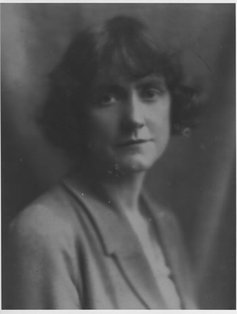
A one-act play, "Trifles" describes the actions in the house of the Wright family, in the wake of Mr. Wright's death by hanging. Three men and two women enter into the house. The men move about upstairs, at the scene of death, while the women look around the kitchen, discussing how many of the chores have been left unfinished. The women knew Mrs. Wright in her youth as a vibrant and energetic young woman, and that she has changed since her marriage. The men scoff at the women's conversation and actions in the house, as they do not believe the womens' concerns to be of much merit.
The women ultimately make a discovery of a small bird, which had been very important to Mrs. Wright, with its neck wrung. In paying attention to their "trifles", the women discover what must have pushed Mrs. Wright over the edge, and decide to cover up the evidence in order to protect her.
This play represents the aspects of female connection, as the women can sympathize with Mrs. Wright's situation, as well as male ignorance. The caged bird is a powerful symbol for what can become of women in marriage, and is something that students will greatly appreciate with regards to women's rights after they have read this story.
-Adam Blazek
The women ultimately make a discovery of a small bird, which had been very important to Mrs. Wright, with its neck wrung. In paying attention to their "trifles", the women discover what must have pushed Mrs. Wright over the edge, and decide to cover up the evidence in order to protect her.
This play represents the aspects of female connection, as the women can sympathize with Mrs. Wright's situation, as well as male ignorance. The caged bird is a powerful symbol for what can become of women in marriage, and is something that students will greatly appreciate with regards to women's rights after they have read this story.
-Adam Blazek
Rich, Adrienne. "Women". <www.poemhunter.com/poem/women-21>. 9 December 2010

In this short poem, the narrator finds herself gazing at three sisters, seated across an expanse of black obsidian rock. The first sister is sewing for an event later, where she will only be seen as the "transparent lady". The second is sewing, looking to mend the tear left in her chest by heartbreak. The third is only staring, left with a pair of torn stockings. In spite of this, the narrator says about her, "she is beautiful"
In only 12 lines, Rich paints a picture of the different lives women can lead, either as subject to men, discarded by men, or independent. Looking at this poem will help students to understand the symbolism in each of the three women, and how Rich believes that there is hope lingering beneath.
-Adam Blazek
In only 12 lines, Rich paints a picture of the different lives women can lead, either as subject to men, discarded by men, or independent. Looking at this poem will help students to understand the symbolism in each of the three women, and how Rich believes that there is hope lingering beneath.
-Adam Blazek
Walker, Annie Louisa. "Women's Rights". <famouspoetsandpoems.com/poets/annie_louisa_walker/poems/6250>. 9 December 2010

This poem also allows for a great deal of variability in interpretation. Walker's overall message could be taken to say that women's rights are to remain in the house, away from the evils of politics, and make life more beautiful for their families. It could also be taken to mean that women deserve to make their own choices about participating in anything, including politics, and that they should hold their freedom to do as they please, rather than blindly follow the masses.
This could be meant to add another fold to the idea of freedom, or to simply allow the author a way to state her widely-different opinions. Either way, students will be able to use this poem as another voice in the fight for women's rights.
-Adam Blazek
This could be meant to add another fold to the idea of freedom, or to simply allow the author a way to state her widely-different opinions. Either way, students will be able to use this poem as another voice in the fight for women's rights.
-Adam Blazek
Ragtime. Dir. Milos Forman. Perf. Elizabeth McGovern, Jeff Daniels, James Cagney. DVD. Paramount Pictures, 1981.
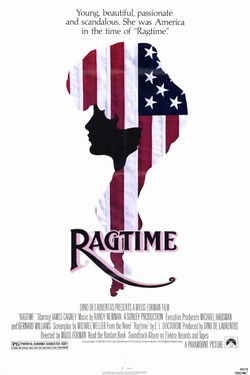
The film version of Ragtime takes place in the New York/New Jersey area during the 1900s. It tells the story of a number of different families and characters, and how their unique actions, lifestyles, and beliefs, describe America at this point in history. It is adapted from the novel by E.L. Doctorow, one of the two main novels we have used in this unit.
Students will be watching this movie during the 8th week of the unit, and taking notes on different, important aspects. These include portrayals of the characters, similarities to the novel, pieces of the novel that were excluded, etc. This will also give students a chance to understand and appreciate the differences between literary and film portrayals of the same story, and how certain aspects of each can be more effective than the other.
-Adam Blazek
Students will be watching this movie during the 8th week of the unit, and taking notes on different, important aspects. These include portrayals of the characters, similarities to the novel, pieces of the novel that were excluded, etc. This will also give students a chance to understand and appreciate the differences between literary and film portrayals of the same story, and how certain aspects of each can be more effective than the other.
-Adam Blazek
Booker T. Washington. Cast Down Your Bucket Where You Are. Rec. 1903. Web. <http://historymatters.gmu.edu/d/88>
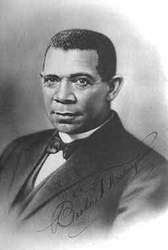
This is an audio recording of Booker T. Washington reading a popular portion of his Atlanta Compromise Speech. It is very old and somewhat difficult to hear, so a transcript should also be provided to students. This recording is to be used as part of a one-day lesson on Booker T. Washington, as Washington appears as a character in Doctorow’s Ragtime. This resource is used in the Week 7, Day 4 Lesson Plan.
-Amy Ankenbrandt
-Amy Ankenbrandt
Busch, Thomas S. "Searching for Victory The Story of Charles Victor(y) Faust." Society for American Baseball Research, Research Journals Archive. 1983. Web.

This short non-fiction document gives the reader background information on the life and baseball career of Charles Victor Faust. It is biographical in nature, focusing on Faust’s involvement with the New York Giants in the early 1900s.
-Amy Ankenbrandt
-Amy Ankenbrandt
"Dr. B.T. Washington, Negro Leader, Dead." New York Times 15 Nov. 1915: 1+. Web. <http://www.nytimes.com/learning/general/onthisday/bday/0405.html>
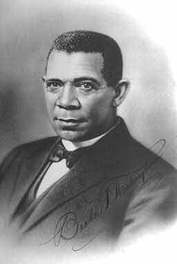
This is an obituary published in the New York Times following the death of prominent African American leader, Booker T. Washington. This article connects to Doctorow’s Ragtime, as Booker T. Washington is used as a character in the novel. This resource is used in the Week 7, Day 4 Lesson Plan.
-Amy Ankenbrandt
-Amy Ankenbrandt
http://worldwithoutgenocide.org/past-genocides/cambodian-genocide

This link is to a website sponsored by the William Mitchell College of Law and it breaks down the cause of the Cambodia genocide in a way that would be very accessible to high school students. The article gives it information by answering who, what, when, where, why and explaining the events after the genocide ended. This link would provide great contextualization for not only the students, but the instructor as well. I used it as an in class reading and only had students to read the last portion entitled “The Aftermath”. That portion gave students an idea about how the genocide ended and helped them to make predictions about how the end of the genocide will affect the characters in the story.
-Janese Nolan
-Janese Nolan
Hoffman, Mary. Amazing Grace. London: Frances Lincoln Limited, 1991.
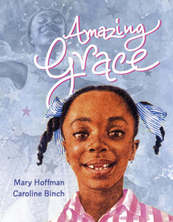
Amazing Grace is a children’s book about a little girl named Grace. In the book, Grace wants to play the part of Peter Pan in the school play. Her peers make fun of her and tell her that she can’t be Peter Pan because she’s black and is a female. Grace decides to try out for the part anyway, and her peers are shocked by her talent at the part of Peter Pan. They realize that anyone can play the part and vote for her to play the role of Peter Pan.
-Liz Lemmon
-Liz Lemmon
Riis, Jacob. How the Other Half Lives. “Genesis of the Tenement.” Web. 8 December 2010.<http://www.authentichistory.com/1865-1897/progressive/riis/chap1.html>.
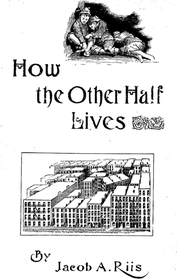
How the Other Half Lives is a novel that was written by Jacob Riis in the early 1900s. In the novel, Riis explains the life of the poverty through both pictures and words. His stories, though harsh, are true accounts of what he witnessed as he experienced the toughness and uncleanliness that thousands of people were forced to live with. His novel was ground-breaking because it was the first of its kind to set light on the harsh treatment of those living in tenement houses and other poor places on the East Coast. I chose to use an excerpt from this novel in my lesson because Riis’s writings are directly mentioned in the novel. I thought it would be good for students to see an example of Riis’s famous work.
-Liz Lemmon
-Liz Lemmon
